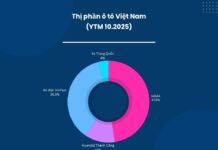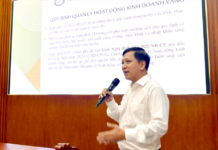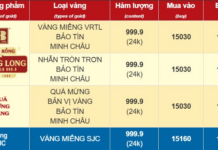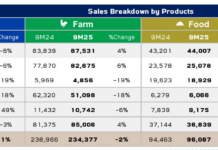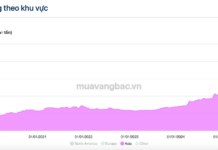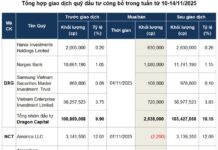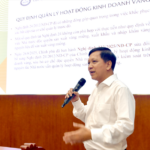 |
According to the Directive, the 2025 Socio-Economic Development Plan is being constructed amid a global context that is expected to remain volatile and unpredictable. While cooperation and development remain the dominant trends, strategic competition, protectionism, new alliance tendencies, trade wars, supply chain disruptions, economic sanctions, and the race for scientific and technological advancement are all on the rise. The global economy is growing slowly and faces multiple risks and challenges.
Domestically, 2025 is of particular importance as it marks the final year of the implementation of the 2021-2025 Socio-Economic Development Plan. It is also the year of concentrated efforts in organizing Party Congresses at all levels, leading up to the fourteenth National Party Congress. After nearly four decades of renewal, the country’s strength has grown significantly in terms of scale and competitiveness. Political, social, and macroeconomic stability has been maintained, and major national projects in key areas have been put into operation. The business and investment environment has improved, and Vietnam’s position and prestige continue to be elevated.
However, difficulties and challenges remain significant, especially in fulfilling the goals of the 2021-2025 Socio-Economic Development Plan.
Given the complex international and domestic situation, ministries, central agencies, and localities are tasked with studying and identifying the fundamental issues of the 2025 Socio-Economic Development Plan.
The context for constructing the 2025 Socio-Economic Development Plan includes analyzing opportunities, advantages, challenges, and risks arising from domestic, regional, and international situations. Particular attention should be given to factors such as the impact of military conflicts in Russia-Ukraine and the Gaza Strip, protectionism, new alliance tendencies globally, inflation, policy adjustments by major economies, commodity and raw material price fluctuations, capital flow trends, global supply chain shifts, digital transformation, green transition, and non-traditional security issues such as pandemics, natural disasters, climate change, water security, and cybersecurity, which directly and multifacetedly affect Vietnam.
Ministries, central agencies, and localities are responsible for proposing key orientations and tasks for 2025, ensuring alignment with the overall goal while adapting to the practical conditions and development level of each sector and locality. These include:
- Continuously monitoring the situation and proactively responding with timely and effective policies. Implementing a harmonious and unified set of macroeconomic policies, coordinating monetary, fiscal, investment, trade, and other policies to consistently maintain macroeconomic stability, curb inflation, boost growth, ensure the major economic balances, and promote production and business activities.
- Focusing on perfecting the socialist-oriented market economy institution, developing all types of markets simultaneously, and accelerating the construction, completion, and review of legal policies to promptly address bottlenecks and mobilize and utilize resources effectively for development. Expediting the progress of strategic infrastructure construction, especially key transport infrastructure projects of national importance with inter-regional connectivity, large urban infrastructure, seaports, and airports.
- Promoting economic restructuring in tandem with growth model innovation to enhance productivity, quality, efficiency, and competitiveness, while increasing the resilience of the economy. Accelerating the development of human resources, particularly high-quality human resources, to meet the demands of the Fourth Industrial Revolution and international integration.
- Continuing the restructuring of three key areas: public investment, state-owned enterprises, and credit institutions. Restructuring production and service industries towards modernization, improving productivity, quality, and efficiency. Promoting the development of the digital economy, green economy, circular economy, e-commerce, and new, effective business models.
- Further developing energy, digital, e-commerce, agricultural, and rural infrastructure, as well as enhancing resilience to climate change. Forming several tourism service centers with high-quality, branded, and regionally competitive tourism products. Developing the marine economy and gradually forming coastal economic zones, industrial parks, and ecological urban areas.
The set goals, orientations, and solutions must closely follow and concretize the viewpoints, goals, three strategic breakthroughs, six key tasks, and twelve groups of key tasks and solutions outlined in the Resolution of the thirteenth National Party Congress. They should also align with implementation capabilities, effectively mobilize and utilize resources, promote investment through public-private partnerships, and foster self-reliance among agencies and units. A strong commitment is necessary to accomplish the goals of the 2021-2025 five-year plan.
Tasks and solutions must be specific in content, timeframe, and progress, with clear quantification
Prime Minister Pham Minh Chinh requires that the set goals, orientations, and solutions closely follow and concretize the viewpoints, goals, three strategic breakthroughs, six key tasks, and twelve groups of key tasks and solutions outlined in the Resolution of the thirteenth National Party Congress. They should also align with implementation capabilities, effectively mobilize and utilize resources, promote investment through public-private partnerships, and foster self-reliance among agencies and units. A strong commitment is necessary to accomplish the goals of the 2021-2025 five-year plan.
The tasks and solutions must be specific in content, with clear quantification and details such as the number of kilometers of expressways, the number of legal documents reviewed and constructed, the number of streamlined administrative procedures, and the number of streamlined personnel. They should also be precise in terms of timeframe and progress, with completion dates, leading units, coordinating units, and assigned responsibilities.
Strive for a minimum increase of 5-7% in domestic revenue estimation for 2025
Regarding the task of constructing the state budget estimate for 2025, the Directive states that domestic revenue estimation for 2025, excluding revenue from land use fees, lottery tickets, state capital divestment, dividends, post-tax profits, and differences in revenue and expenditure of the State Bank, should aim for a minimum average increase of 5-7% compared to the 2024 evaluation (excluding factors of revenue increase or decrease due to policy changes). The growth rate for each locality should correspond to economic growth and revenue sources in each locality, taking into account enhanced revenue management, anti-tax evasion measures, and tax debt collection.
The estimate for revenue from import-export activities in 2025 is expected to increase by an average of 4-6% compared to the 2024 evaluation.
All revenue from rearranging and handling state assets (including land and houses), revenue from leasing and transferring the right to exploit infrastructure works for a limited period, and revenue from land and water surface exploitation (after deducting related expenses) must be fully budgeted and paid to the state budget as prescribed by law.
State budget expenditure estimate should be realistic and minimize the cancellation of estimates and the transfer of funds to the following year
Constructing the state budget expenditure estimate for 2025 must comply with legal regulations, principles, criteria, and approved allocation ratios for capital investment and regular expenditure from the state budget. It should also align with the Resolution No. 07-NQ/TW dated November 18, 2016, of the Politburo on restructuring the state budget, while promoting the rearrangement of organizational apparatus, streamlining of personnel, and focusing on the key public service sector.
Ensure resources for continuing the implementation of salary and social insurance policies according to Resolutions No. 27-NQ/TW and No. 28-NQ/TW of the 7th Plenum of the 12th Central Committee, and Resolution No. 104/2023/QH15 of the 15th National Assembly.
Uphold the principles of transparency and thriftiness, as prescribed in Resolution No. 74/2022/QH15 dated November 15, 2022, of the National Assembly, from the stage of task determination. Ensure consistency in implementing tasks, from budget estimation to allocation, management, and utilization of the state budget. The estimate should be realistic and detailed before December 31, minimizing the cancellation of estimates and the transfer of funds to the following year. Proactively review overlapping policies and tasks, and prioritize expenditures based on urgency, importance, and feasibility in 2025. Only propose new policies, schemes, and tasks when absolutely necessary and with secured funding. Fully anticipate the financial requirements for implementing new policies, regimes, and tasks that have been decided by authorized agencies. Efficiently utilize revenue from equitization and state capital divestment in accordance with the law.
Regarding investment and development expenditure, the 2025 public investment plan for capital from the state budget must be allocated to tasks and projects that match their implementation and disbursement capacity, ensuring detailed allocation to tasks and projects before December 31, 2024. This will address issues such as fragmented and inefficient capital allocation, unallocated capital, and ensure timely allocation and detailed planning for tasks and projects according to regulations.
Additionally, there should be innovations in management mechanisms, financial mechanisms, and the reorganization of the system of public service units. The budget estimate for public service units should be based on the orientation outlined in Resolution No. 19-NQ/TW dated October 25, 2017, of the 6th Plenum of the 12th Central Committee, and relevant laws and guidelines on financial autonomy for public service units. Public service units under central ministries and agencies that partially self-ensure regular expenditures should continue to build their 2025 budget estimates with a minimum reduction of 3% in direct support from the state budget compared to the 2024 estimate, along with streamlining personnel in line with Resolution No. 19-NQ/TW. Public service units under central ministries and agencies that are fully funded by the state budget for regular expenditures should aim for a minimum reduction of 2% in direct support from the state budget compared to the 2024 estimate, excluding essential public services that are guaranteed by the state budget.
For agencies and units applying special financial mechanisms, starting from the 2025 budget year, administrative management agencies will no longer be eligible for special financial mechanisms regarding salaries, allowances, income, and regular expenses. These units will base their 2025 revenue and expenditure estimates on the decisions of authorized agencies regarding financial mechanisms applied from July 1, 2024, and for the year 2025, in accordance with Resolution No. 104/2023/QH15 of the National Assembly on the state budget estimate for 2024.
The Directive also states that ministries and central agencies should base their 2025 estimates for salaries, pensions, allowances for people with meritorious services, and social security policies on the decisions of authorized agencies in 2024. They should provide detailed calculations for the fund for salaries, contributions, and policies and regimes related to people, along with specific increases or decreases, achieved results, and existing issues, if any.
Constructing the local budget estimate must closely follow the socio-economic development goals and tasks of the nation and localities for 2025
Constructing the local budget estimate for 2025 must closely follow the socio-economic development goals and tasks of the nation and localities for 2025, the five-year financial plan, the medium-term public investment plan for 2021-2025, and adhere to the Law on State Budget and relevant guidelines. It should also align with the regime and policies on state budget expenditure, ensuring sufficient resources to implement the central government’s policies and regimes.
- Localities should build their budget revenue estimates based on a comprehensive assessment of all sources of revenue from taxes, fees, charges, and other sources on their premises, as stipulated in Article 7 of the Law on State Budget and relevant legal documents.
- The budget revenue estimate should be proactive and realistic, fully accounting for new revenue sources on the premises to accurately calculate the revenue, without leaving room for localities to set targets for revenue efforts. A concrete analysis should be conducted on the impacts affecting the 2025 state budget revenue estimate in terms of collection areas, fields, items, and taxes.
- Construct the local budget expenditure estimate based on the local budget revenue sources according to the assigned division of revenue, and the supplementary balance from the central budget to the local budget, which is determined as the amount allocated in the 2024 estimate (if any), and the supplementary amount from the central budget to the local budget for implementing salary reforms in 2025, after using the local budget’s salary reform resources (if any).
- Base the construction of the local budget estimate on the socio-economic development goals of the locality for 2025 and the five-year period 2021-2025, along with the estimated revenue and expenditure tasks of the locality for 2024. Ensure priority allocation of funds for projects, tasks, and regimes that have been committed to and promulgated.





